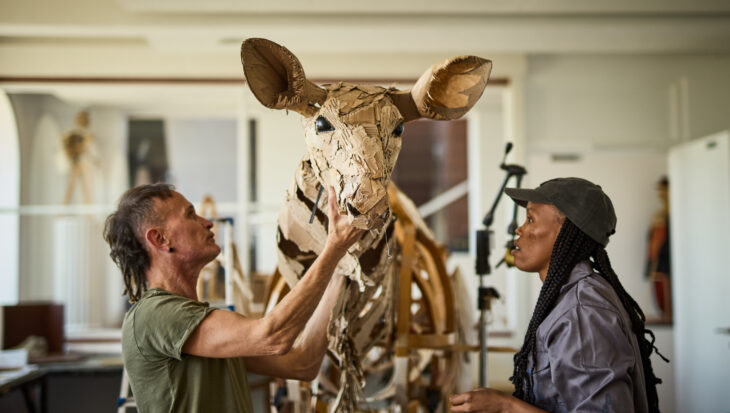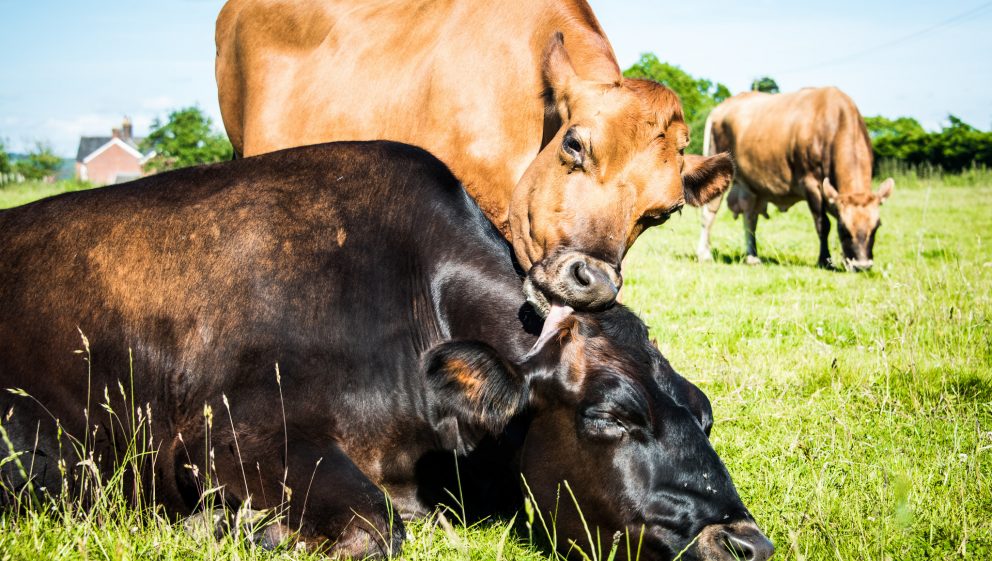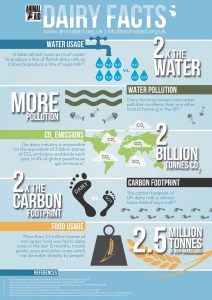‘The Herds’ will be arriving in London this Friday!
Have you heard? A breathtaking arts initiative, ‘The Herds’ will be arriving in London this Friday.
Posted 27 Jun 2025

Posted on the 4th February 2019
“Februdairy” is a feeble attempt by the dairy industry to promote their products that are quickly falling out of favour with the general public; here are 10 reasons why you should consider ditching dairy.

1) Dairy is cruel to cows…
The life of a dairy cow is not one of peace and harmony, as some may have you believe. Disease is rife, with many cows suffering from mastitis– a painful bacterial infection that affects the udder. They are treated solely as milk machines, rather than the sentient beings that they truly are. Most of the time, the cows are artificially inseminated, because like humans cows need to have a baby in order to produce milk. These babies are then taken away from them, causing the mother immense stress – mother cows have been known to cry out for days after this traumatic experience.
2) And calves
…and what happens to those calves? Well, some of the female calves will go on to face the same fate as their mothers. Whereas often the male calves are considered a useless by-product of the dairy industry (because they do not produce milk!) and so can be sent on long journeys, which can last days, to the European continent to be raised for veal, or tens of thousands every year are simply shot in the head when they are about one day old. Their carcasses can often be used to feed hunting dogs.
3) Dairy farming is polluting our rivers
According to the Environment Agency, dairy farms are responsible for more water pollution incidents than any other form of farming. Slurry from dairy farms can leak into rivers and streams where it kills fish and spreads disease.
4) Dairy farming and air pollution
Ammonia is a gas which plays a major role in creating particulate matter, one of the biggest threats to people’s health from air pollution, with emissions from farms harming the health of people hundreds of miles away. The ammonia is released into the atmosphere when slurry from the farms is spread; dairy farms are responsible for about a third of UK ammonia emissions which contribute to toxic air pollution. This has led to researchers calling for dairy herds to be reduced in order to reduce emissions.
5) Antibiotic resistance
Antibiotic use in animal farming is a huge problem, leading to antibiotic resistant bacteria which could lead to new diseases and render some of our medicines ineffective. A DEFRA survey from 2010-2011 found that 85% of non-organic farms routinely used antibiotics; this is usually used across all non-lactating cows to attempt to prevent diseases such as mastitis.
6) Cows in the UK still spend most of their time inside
There is no legal definition of ‘Free Range’ milk. In order to meet the criteria of the Free Range Pasture Promise, cows only need to be outside for 180 days and nights per year. As many as20% of all dairy cowsin the UK spend all of their lives on the farm inside sheds, on what is know as ‘zero-grazing’.
7) Where do those ‘spent’ dairy cows go?
When they are around 5-6 years old, the years of forced impregnation and milking take its toll on the poor dairy cows and they soon become ‘spent’, which means they stop producing as much milk as they once did, and therefore aren’t as profitable. As a result they are sent to the slaughterhouse, where they face a brutal and terrifying death.Animal Aid has filmed covertly inside slaughterhouses and documented ‘spent’ dairy cows being slaughtered and the fear and terror they face.
8) More soya is used to produce cows’ milk than soya milk
Dairy cows now produce so much milk that even many of those who are allowed to graze can no longer get enough nutrients from grass alone, so they are also often fed grain, soya and other crops. In fact, around ten times as much soya is fed to British dairy cows each year than is used to make all the soya milk currently consumed in the UK in 12 months.
9) Milk production is contributing to global warming
It’s not just ammonia that is a causefor concern; methane and nitrous oxide are powerful greenhouse gases far stronger than carbon dioxide and are produced in huge quantities by dairy cows and their slurry. The equivalent of around four per cent of all greenhouse gas emissions are thought to come from dairy farming, with the carbon footprint of cow’s milk being about twice as large as that of soya milk.
10) Last but not least, you really don’t need it!
So you may be reading this and thinking ‘how am I going to live with dairy?!’. But don’t worry! These days it is so easy to eat vegan, with plant-based alternatives to just about everything, including cheese, ice-cream, crème fraîche and of course countless amounts of different plant-milks. Going vegan certainly doesn’t mean that you have to give up your favourite foods.

Have you heard? A breathtaking arts initiative, ‘The Herds’ will be arriving in London this Friday.
Posted 27 Jun 2025

As the greyhound racing industry releases its annual data on the number of dogs’ deaths, a raft of well-known names - alongside their canine friends - has called upon the Government to end greyhound racing....
Posted 26 Jun 2025
